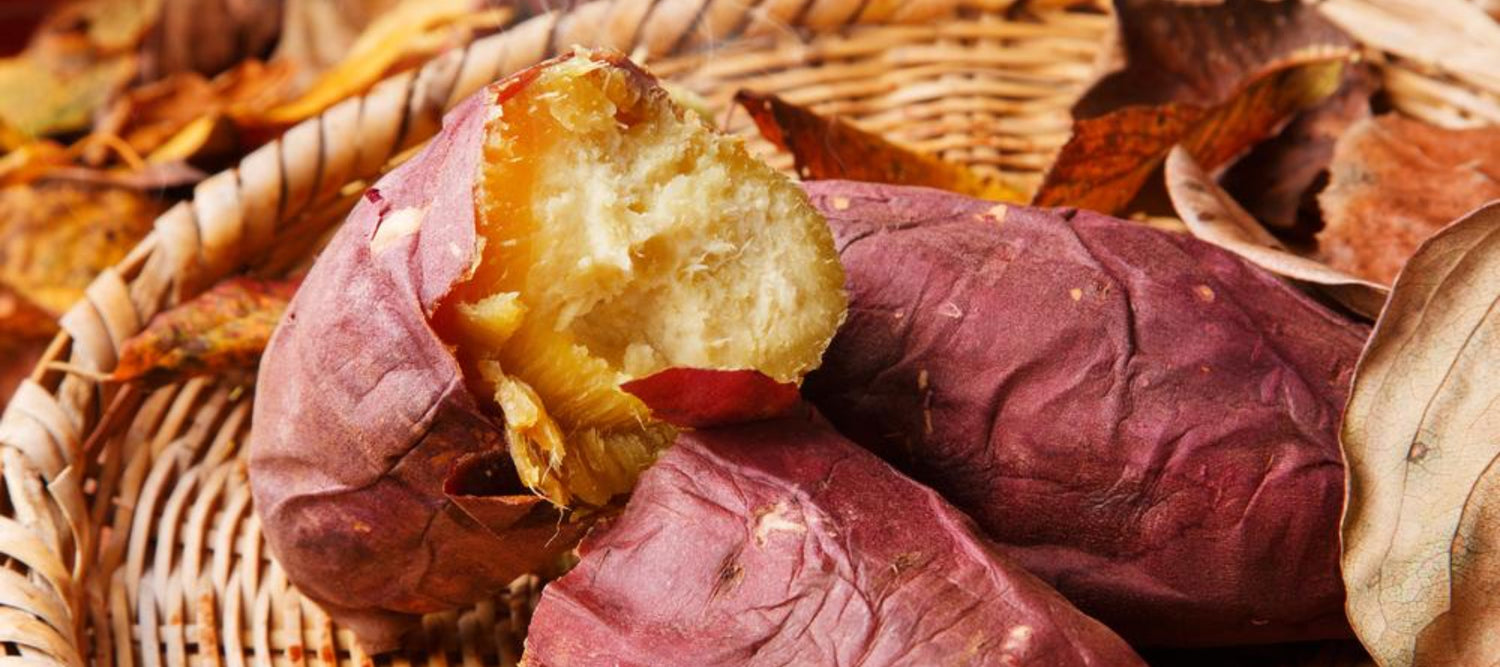In Japan, starches such as the Japanese sweet potato and taro form an important and satisfying part of winter meals. They are also slow carbohydrates with high fiber content to slow the release of naturally occurring sugars into the bloodstream - in fact, the Japanese sweet potato which has a white or pale yellow flesh inside, is an even slower carb than the more commonly found orange sweet potato.
Where to Buy Japanese Sweet Potato
You can however now find these white-fleshed Japanese sweet potatoes at Whole Foods and Trader Joe's.
They tend to have a creamier, sweeter, more chestnut-like flavor than their more sweet orange-fleshed cousins. However, they have a lower gylcemic index and, if you bake, steam or microwave them ahead of time, allow them to cool and then heat up when you need them, they make a wonderful resistant starch.
For those of you who don't know what a resistant starch is, it's a feast for the healthy gut bugs in your microbiome. Another example of a resistant starch would be a Fructooligosacharride, such as the one we use in Primeadine® to help feed the fuso and bacteroides bacteria to help your own gut biome manufacture more spermidine. Inulin and acacia fibers are other examples of FOS, as is cooked and cooled boiled white rice, such as that used in sushi.
How to Cook Japanese Sweet Potatoes
I like to bake Japanese sweet potatoes as a special treat. Baking actually causes the fibers inside the sweet potato to break down, which means they won't be available to slow the release of sugars into your bloodstream. In addition, higher exposure to heat breaks down the starch in sweet potoatoes converting them into sugar which can spike your blood glucose. I do all I can to reduce the amount of sugar I take in because, frankly, sugar equals wrinkles and I don't want them! But as an everyday snack, I steam mine since steaming doesn't convert as many of the starches in the potato into sugars.
It only takes 20 minutes to steam a Japanese sweet potato versus baking which can take 45 minutes at 200 degrees Celsius. I like to do several in one go so I can keep a bunch in the fridge and then quickly heat up in the microwave for 60 seconds. And of course by keeping some, I'm able to have a ready supply of lovely creamy sweetness full of resistant starch - so a treat for me and my gut buddies.
If you've seen my Instagram feed, you probably have an idea of how I like to dress them: with a little bit of olive oil and sesame seeds, or a quick sauce cooked up with a bit of olive oil, finely diced shallots, ginger and then a 1/4 teaspoon of miso paste at the end to give it some flavor (add miso to your individual taste here). You'll get some oleic acid from the olive oil, calcium, iron, magnesium and B6 from the sesame seeds, anti-inflammatory goodness from the ginger and sulfur from the shallots.
Miso, if not heated too high, and if it's not pasteurized, will also have some lovely colonies of new gut bugs for you to introduce along with your resistant starch.
Bon appetit! Simple, satisfying and full of goodness.



Leave a comment
This site is protected by hCaptcha and the hCaptcha Privacy Policy and Terms of Service apply.